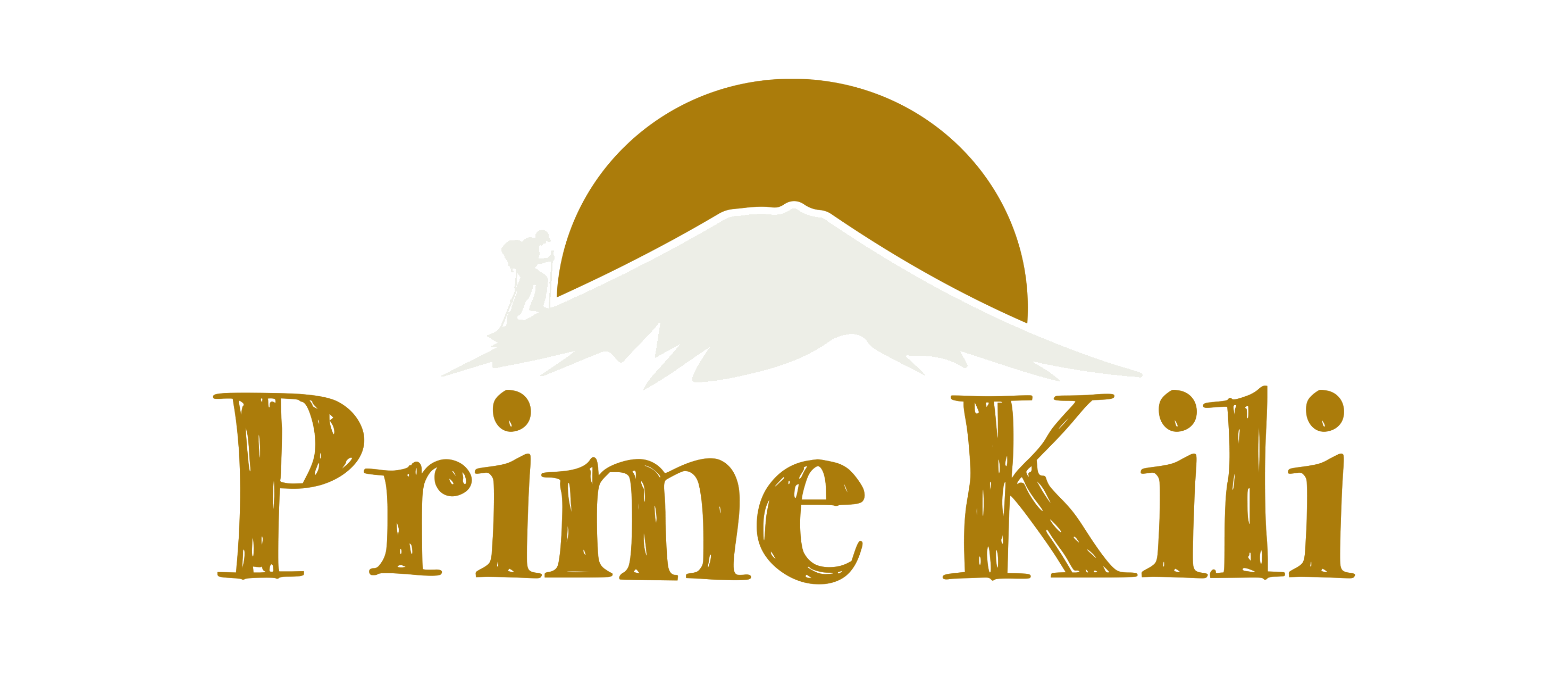How to train for Climbing Mount Kilimanjaro?
Table of content
- Mount kilimanjaro
- The Reality of Climbing Mount Kilimanjaro
- Understanding Altitude on Kilimanjaro
- Physical Training for Kilimanjaro
- Practice Hikes: Simulating the Climb
- Altitude Training and Simulation
- Mental Preparation for the Climb
- Acclamatization and Health on the Mountain
- Sample Weekly Training Program
- Sample Weekly Training Program
- Final Thoughts: Climb Kilimanjaro the Right Way
Mount Kilimanjaro
Mount Kilimanjaro stands as the tallest mountain in Africa and the highest free-standing mountain in the world. Every year, tens of thousands of adventurers from across the globe attempt to summit its peak—Uhuru Peak, at 5,895 meters (19,341 feet) above sea level. While the climb is non-technical and doesn’t require ropes or mountaineering equipment, it remains a significant physical and mental challenge, primarily due to altitude.
Preparing for this journey is critical. At Prime Kilimanjaro, we specialize in helping climbers succeed by focusing on comprehensive physical training, altitude readiness, and mental conditioning.
The Reality of Climbing Mount Kilimanjaro
Although Kilimanjaro is considered a “walkable” mountain, it is by no means easy. One of the most common misconceptions is that physical fitness alone guarantees a successful summit. In truth, the altitude and rate of ascent
are the most difficult parts of the climb. Even elite athletes may experience altitude sickness if not properly acclimatized.
An estimated 30% to 50% of climbers do not reach the summit. The majority of failed attempts are due to symptoms of Acute Mountain Sickness (AMS), which can include headaches, nausea, dizziness, and fatigue. Proper preparation and a gradual ascent are essential to minimize these risks.
Understanding Altitude on Kilimanjaro
At higher altitudes, the air pressure decreases, which leads to lower oxygen availability* in each breath. This impacts your body’s performance significantly, especially at elevations above 3,000 meters.
Mount Kilimanjaro’s summit has just about 50% of the oxygen found at sea level. As you ascend, your body must work harder to supply oxygen to your muscles and organs. This is why acclimatization and training for high-altitude performance are crucial.
Physical Training for Kilimanjaro
Your physical condition plays a major role in how well you’ll handle the climb. To give your body the strength and endurance needed for multiple days of hiking, you should begin training at least 8 to 10 weeks before your scheduled departure.
Cardiovascular fitness is important because you’ll be hiking for long hours, often at a slow but steady pace. Exercises like running, brisk walking, cycling, swimming, or using a stair climber are ideal.
You should also develop muscular strength, particularly in your legs and core. Activities such as squats, lunges, step-ups, and planks will build the muscle endurance required to ascend steep terrain while carrying your gear.
Don’t ignore your upper body. You will be carrying a day pack with water, snacks, clothing layers, and personal items during the trek. Strengthening your shoulders, back, and arms will make this more manageable.
Consistency is key. Train at least 4 to 5 days per week, combining aerobic workouts, resistance training, and long-distance hikes.
Practice Hikes: Simulating the Climb
The best form of training for climbing Kilimanjaro is to go hiking. If possible, hike on natural trails with varied elevation, rocky terrain, and steep inclines.
Plan for at least two long hikes (6–10 miles) per month in the lead-up to your trek, along with weekly shorter hikes. Wear the boots and backpack you plan to use on Kilimanjaro to break them in and become accustomed to their weight and fit.
Include uphill and downhill walking to strengthen your quads, hamstrings, calves, and stabilizer muscles. The descent from the summit can be particularly tough on the knees and thighs, so downhill conditioning is especially important.
If you’re restricted to urban environments or gyms, use treadmills with incline settings or stair machines to replicate the climb.
Altitude Training and Simulation
If you don’t live at elevation, you may want to explore altitude simulation techniques. These help your body adapt to reduced oxygen environments, simulating what you’ll experience on Kilimanjaro.
Altitude training masks are designed to restrict airflow during exercise, challenging your respiratory system and simulating the feeling of breathing at altitude. While these masks do not replicate the lower oxygen saturation found at higher elevations, they can condition your lungs to work more efficiently.
A more advanced option is an altitude tent. These devices reduce the oxygen concentration in your sleeping environment, mimicking altitudes between 2,500 and 4,000 meters. By sleeping in this environment nightly for several weeks, your body can begin to adapt to lower oxygen levels, improving your acclimatization process before you even arrive in Tanzania.
Mental Preparation for the Climb
Climbing Kilimanjaro is also a mental challenge. You’ll spend long hours trekking, often in silence, with only your thoughts to keep you company. The mental discipline to continue putting one foot in front of the other, even when you’re tired, cold, or uncomfortable, can make the difference between reaching the summit or turning back.
Begin building your mental resilience by engaging in longer, more difficult hikes that test your limits. Practice staying positive and focused during physical discomfort. Mental endurance often comes from confidence, which you build through consistent training and a strong mindset.
Meditation, breathing techniques, and visualization can also be effective tools. Many climbers find that repeating positive affirmations during difficult parts of the trek keeps their spirits high.
Acclimatization and Health on the Mountain
The best way to avoid altitude sickness is to allow your body time to adjust to increasing elevations. Choose a longer Kilimanjaro route—at least 7 to 9 days—to maximize your chances of success. These extended itineraries give you more time to rest, hydrate, and let your body catch up with the demands of altitude.
Hydration is vital. Drink at least 3 to 4 liters of water per day during your climb. Eat well, even if your appetite decreases. Your body needs fuel to handle the increased effort.
If needed, consult your doctor about taking Diamox (acetazolamide), a medication used to help prevent altitude sickness.
Recognize warning signs of altitude sickness, such as persistent headaches, nausea, vomiting, extreme fatigue, or confusion. Your Prime Kilimanjaro guide is trained to recognize and respond to these symptoms. Never ignore how you’re feeling—your health and safety come first.
Sample Weekly Training Program
Weeks 1–4: Build Base Fitness
Focus on general cardiovascular fitness with 30–45 minutes of activity like running, cycling, or brisk walking, 4 times a week. Add 2 sessions of body weight strength training.
Weeks 5–7: Increase Endurance
Lengthen cardio sessions to 60 minutes, include more hill work, and add longer hikes on weekends. Continue strength training, focusing on legs and core.
Week 8+: Maximize Simulation
Prioritize hikes with a weighted pack (5–10 kg), simulate elevation where possible, and taper your training a week before departure to allow for recovery.
Final Thoughts: Climb Kilimanjaro the Right Way
Climbing Kilimanjaro is a life-changing adventure, but it’s not to be taken lightly. The more you invest in your preparation, the more likely you are to reach the summit safely and successfully.
With the guidance and expertise of Prime Kilimanjaro, you’ll have the tools, support, and training resources you need to make your climb a success. We offer high summit success rates, experienced guides, safe itineraries, and personalized support from the moment you book until you’re standing at the top of Africa.
Categories
- Kilimanjaro Articles
- Safari Article
- Destination Ariticle
- safari tips
What It’s Like to Go on Safari in Tanzania
- safari tips
Why You Should Book a Hot-Air Balloon Safari in Tanzania
- Kilimanjaro tips
What to Bring for Your Prime Kilimanjaro Adventure
Other articles
- safari tips
What It’s Like to Go on Safari in Tanzania
- Kilimanjaro tips
How to train for Climbing Mount Kilimanjaro?
- Kilimanjaro tips
How Hard Is Climbing Kilimanjaro?
- safari tips

